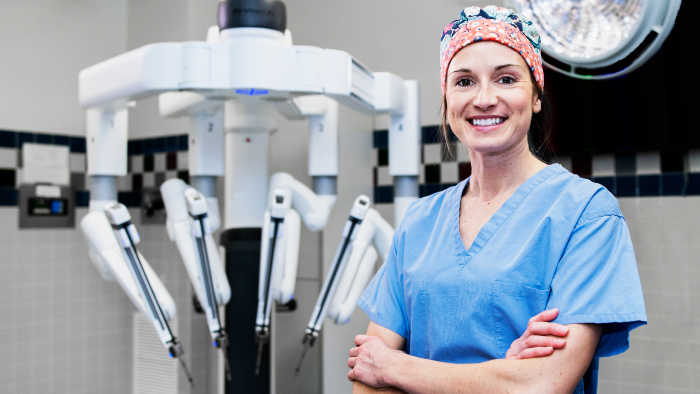HSHS St. John’s Hospital offers patients the latest robotic-assisted surgery system, the da Vinci Xi. The da Vinci Xi gives surgeons an enhanced three-dimensional viewing area, greater flexibility and depth perception necessary to manipulate tissue. Robotic-assisted surgery is an alternative to traditional open surgical procedures and conventional laparoscopic surgery.
The da Vinci Xi surgeon console is set away from the actual operating table and contains the master controls the surgeon uses to operate. The handles mimic the surgeon’s natural hand and wrist movements into corresponding, precise and scaled movements. The "endoWrist" Instruments are only able to move when commanded by the surgeon.
Not Your Traditional Surgery
The da Vinci Xi Surgical System supports a less-invasive technique than traditional surgery. Procedures are always performed entirely by a surgeon. After a surgical site is accessed through tiny incisions, the system translates the surgeon’s hand movement into smaller, more precise actions of the tiny instruments inside the patient’s body.
The da Vinci Xi Surgical System may be an option for patients having colorectal, general, bariatric, thoracic, gynecologic, or urologic related surgery.
